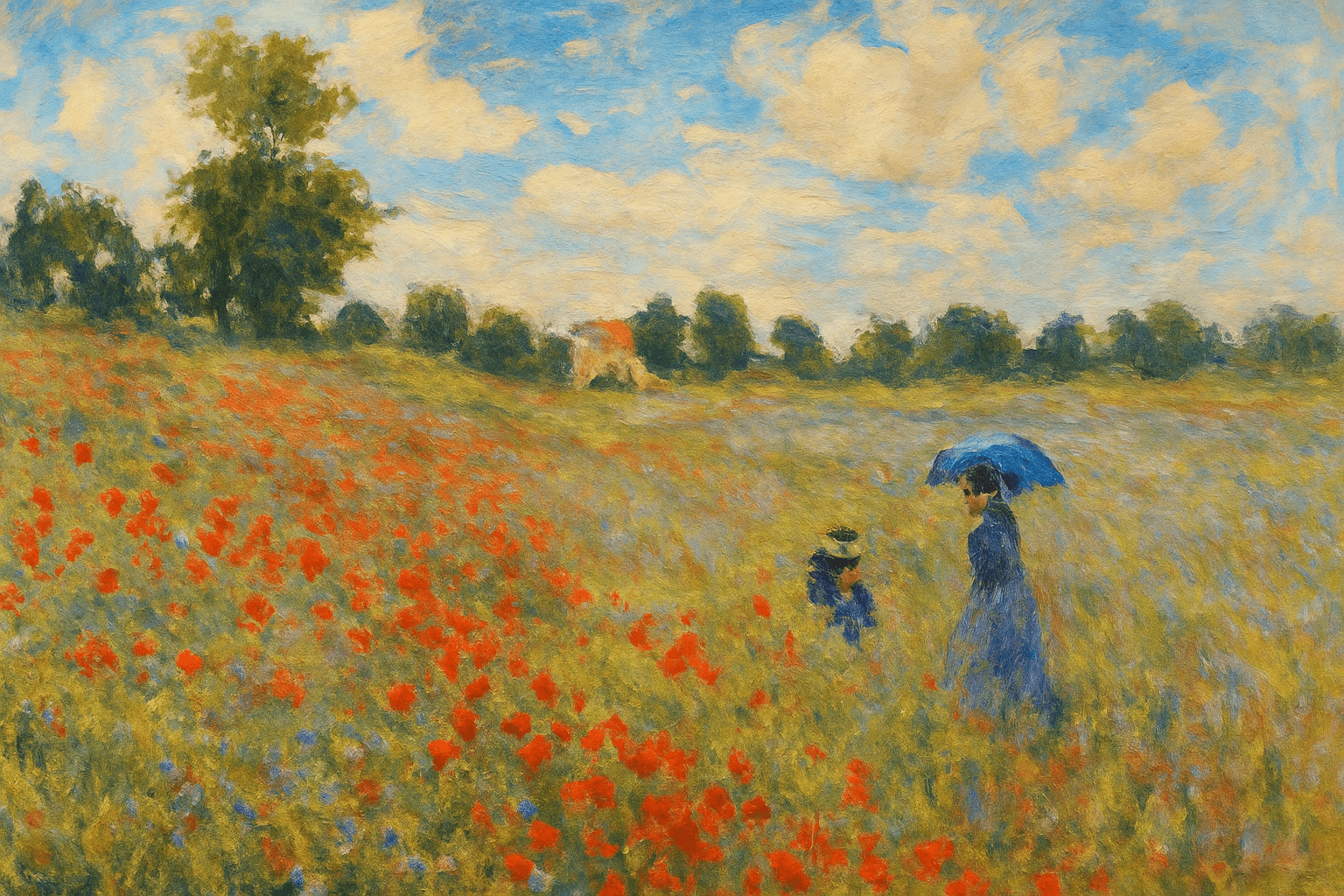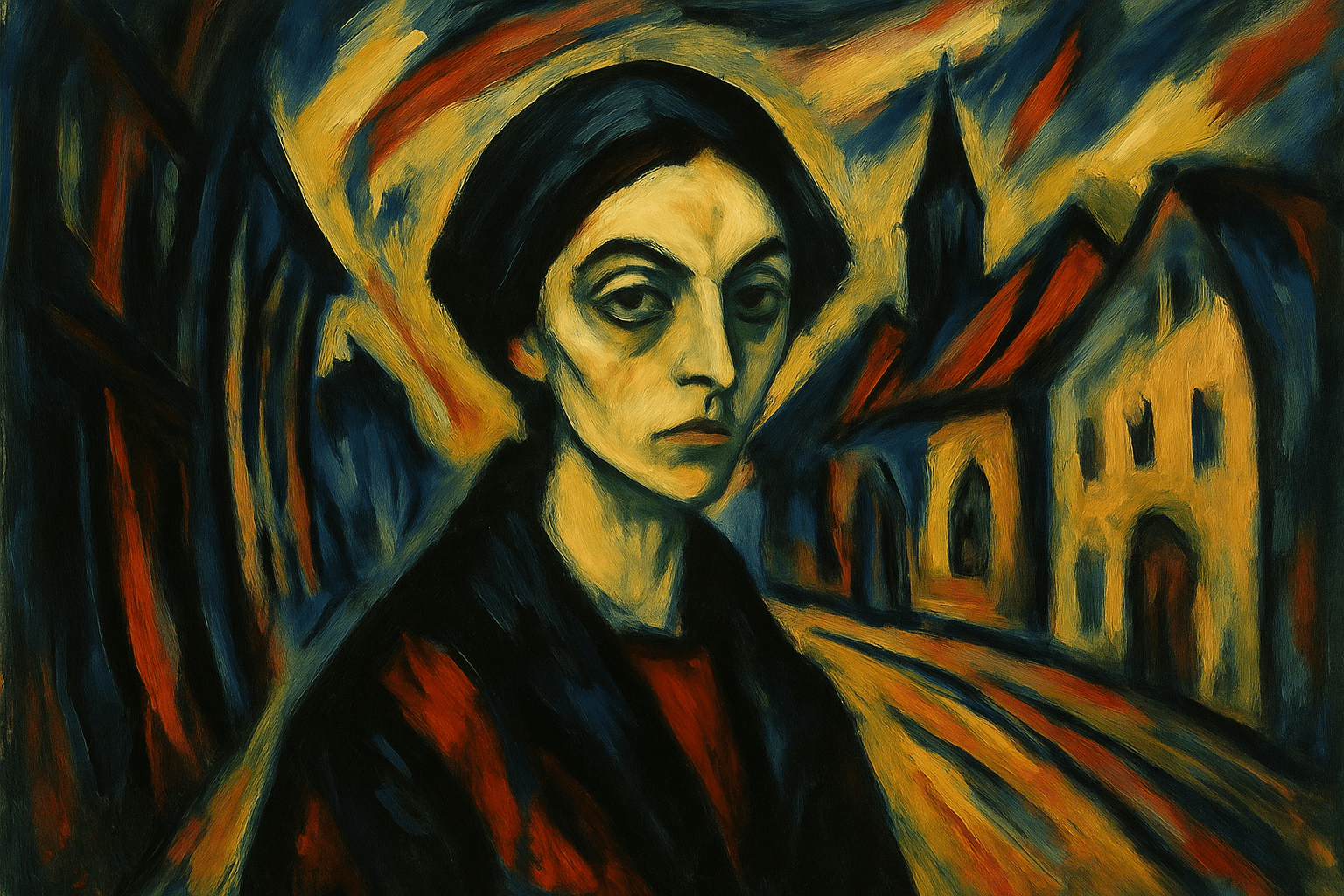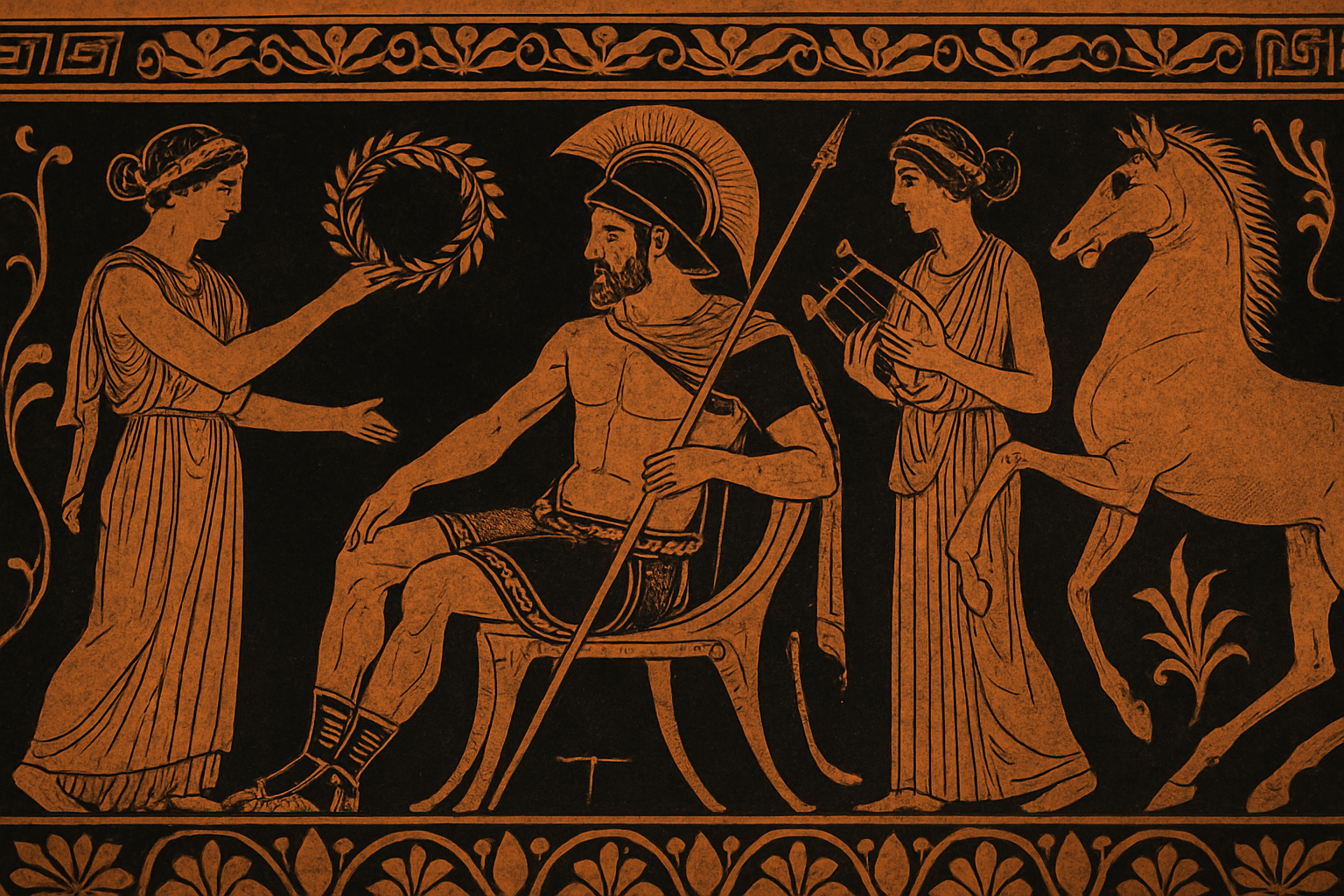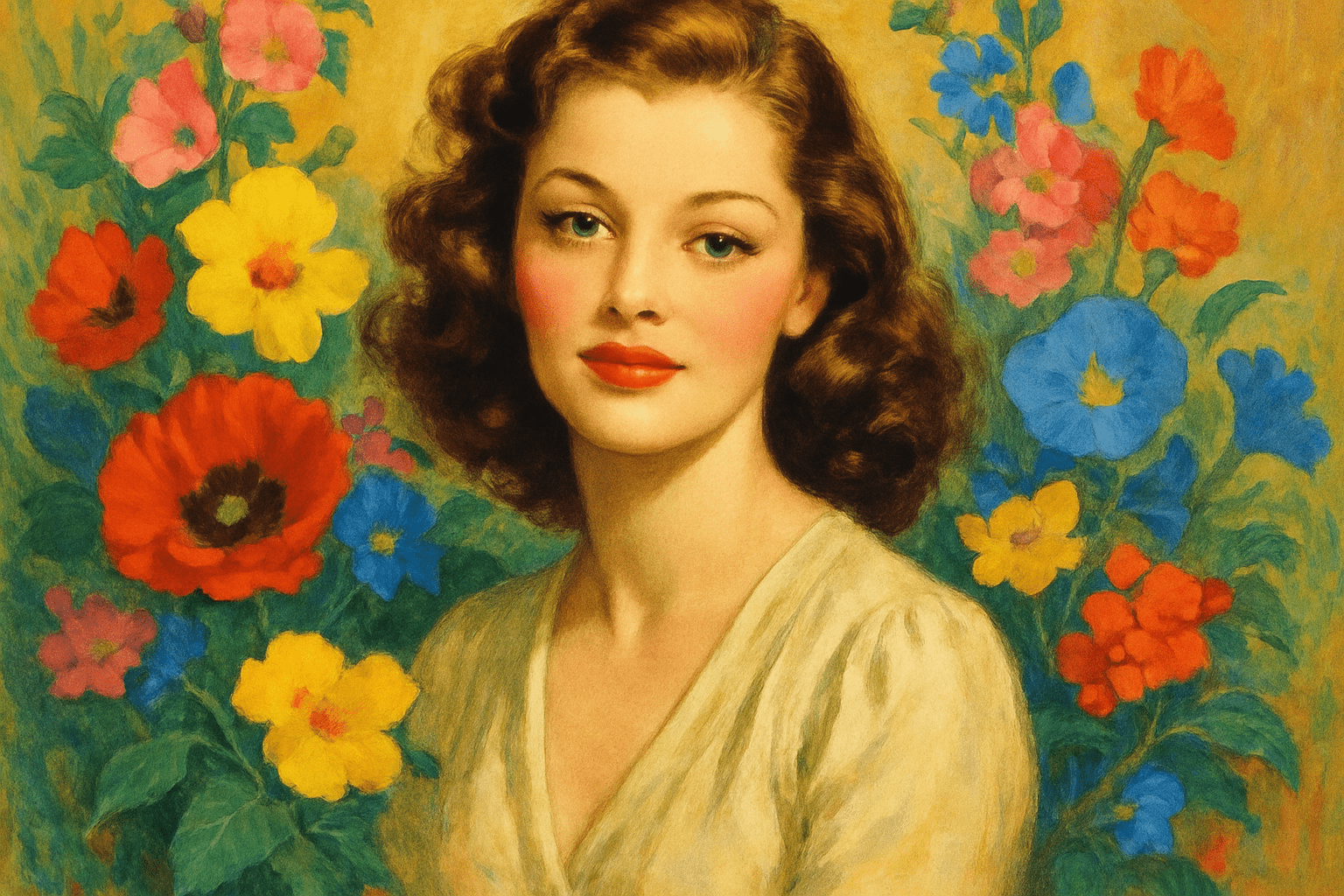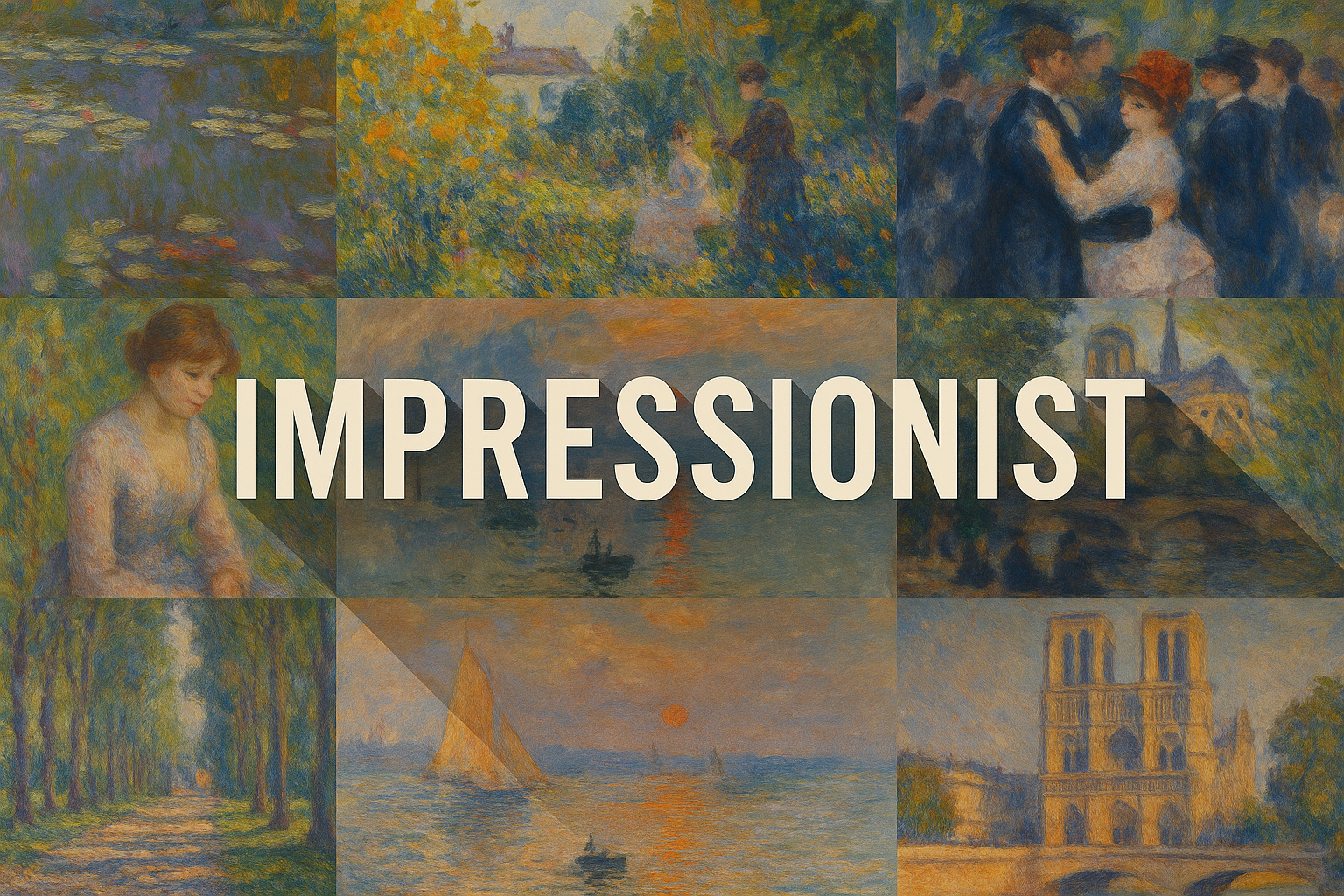
Impressionist
The visual appearance of the art style Impressionist is characterized by short, thick brushstrokes of bright colors. The colors are often blended together to create a soft, hazy effect. The overall appearance is one of light and movement.
AOI thinking about Impressionist [+_~]-/
Overview and Quickfacts
The Impressionist art style is characterized by its focus on capturing light and naturalistic scenes. Impressionist paintings are typically characterized by soft, blurred lines and muted colors. The Impressionist movement began in the late 1800s and was led by artists such as Claude Monet and Pierre-Auguste Renoir.
Can understand it also, as:
Impressionist, Post-Impressionist, Fauvist, Cubist, Neo-Impressionist, Pointillist, Expressionist, Surrealist
Categorize it as:
Impressionism, Modernism
.: Dreaming :.
holds a HAIKU for the art style
:. Thought is power .:
Detailed Description
In the late 1800s, a group of artists in France began painting in a new style that came to be known as Impressionism. These artists were interested in capturing the momentary effects of light and color, rather than painting detailed, realistic scenes. Some of the most famous Impressionist painters include Claude Monet, Pierre-Auguste Renoir, and Camille Pissarro. One of the best-known paintings in the Impressionist style is Monet’s “Impression, Sunrise.” This painting captures the momentary effects of light as the sun rises over the harbor of Le Havre. The painting is filled with soft, blurry colors, which creates an overall impression of the scene, rather than a realistic depiction of it. Other famous Impressionist paintings include Renoir’s “Luncheon of the Boating Party” and Pissarro’s “Boulevard des Italiens, Morning Sunshine.” These paintings, like “Impression, Sunrise,” capture the effects of light and color in a way that is more concerned with overall impression than with realistic detail. If you’re interested in seeing more Impressionist paintings, you can visit the Musee d’Orsay in Paris, which has one of the largest collections of Impressionist art in the world. Or, you can visit the Clark Art Institute in Williamstown, Massachusetts, which has a large collection of Impressionist paintings, as well as other works of art from the late 1800s.
.. beep, beep, beep ..
<START OF TRANSMISSION>
1. Impressionism is a 19th-century art movement that originated with a group of Paris-based artists. 2. The Impressionists rejected the traditional rules of painting, which they believed constricted creativity. 3. They instead sought to capture the momentary, sensory effect of a scene or object through loose brushwork and unblended colors. 4. The name "Impressionism" comes from the title of a Claude Monet painting, Impression, Sunrise (1872), which was exhibited in the first Impressionist exhibition in 1874. 5. The Impressionist movement spread to other countries, including the United States, where it was embraced by artists such as Mary Cassatt and John Singer Sargent. 6. The style continued to evolve into the 20th century, with artists such as Pablo Picasso and Henri Matisse incorporating elements of Impressionism into their work. 7. Today, Impressionist paintings are some of the most popular and valuable works of art in the world. 8. The first Impressionist exhibition was held in Paris in 1874 and featured works by Claude Monet, Pierre-Auguste Renoir, Camille Pissarro, Alfred Sisley, and Frederic Bazille. 9. The exhibition was met with criticism from the press, who derided the paintings as "impressions" rather than art. 10. Despite the criticism, the exhibition was a success, and the Impressionists went on to hold seven more exhibitions between 1874 and 1886. 11. The Impressionists were united by their rejection of the academic painting style of the time, which they felt constricted creativity. 12. They instead sought to capture the momentary, sensory effect of a scene or object through loose brushwork and unblended colors. 13. The name "Impressionism" comes from the title of a Claude Monet painting, Impression, Sunrise (1872), which was exhibited in the first Impressionist exhibition in 1874. 14. The Impressionist movement spread to other countries, including the United States, where it was embraced by artists such as Mary Cassatt and John Singer Sargent. 15. The style continued to evolve into the 20th century, with artists such as Pablo Picasso and Henri Matisse incorporating elements of Impressionism into their work. 16. Today, Impressionist paintings are some of the most popular and valuable works of art in the world. 17. The first American Impressionist exhibition was held in New York in 1886 and featured works by Mary Cassatt, John Singer Sargent, and Childe Hassam. 18. The exhibition was a success, and American Impressionism soon gained popularity, with artists such as William Merritt Chase and Frank W. Benson embracing the style. 19. American Impressionism reached its peak in the early 20th century, with artists such as Edward Hopper and Georgia O'Keeffe creating some of the most iconic works in the genre. 20. Today, American Impressionist paintings are highly sought-after by collectors and continue to inspire artists around the world.
<EOF>
.. robbel bob
Visual Examples from our image gallery
Coming soon, we are so slow .. might never come
Artists, Paintings, and more
(be aware, can be highly speculative)
Artists (be aware, speculation possible):
1. Claude Monet (1840-1926) 2. Pierre-Auguste Renoir (1841-1919) 3. Paul CÃÂézanne (1839-1906) 4. Edgar Degas (1834-1917) 5. Camille Pissarro (1830-1903) 6. Henri de Toulouse-Lautrec (1864-1901) 7. Mary Cassatt (1844-1926) 8. Gustave Caillebotte (1848-1894) 9. Georges Seurat (1859-1891) 10. Paul Gauguin (1848-1903) 11. Vincent van Gogh (1853-1890) 12. John Singer Sargent (1856-1925) 13. Henri Rousseau (1844-1910) 14. FrÃÂédÃÂéric Bazille (1841-1870) 15. Armand Guillaumin (1841-1927) 16. Georges Pierre Seurat (1859-1891) 17. Gustave Courbet (1819-1877) 18. ÃÂÃÂdouard Manet (1832-1883) 19. Berthe Morisot (1841-1895) 20. Jules Bastien-Lepage (1848-1884) 21. Claude Joseph Vernet (1714-1789) 22. Jean-Baptiste-Camille Corot (1796-1875) 23. HonorÃÂé Daumier (1808-1879) 24. ThÃÂéodore Rousseau (1812-1867) 25. Jean-FranÃÂçois Millet (1814-1875) 26. Charles-FranÃÂçois Daubigny (1817-1878) 27. EugÃÂène Boudin (1824-1898) 28. Johan Barthold Jongkind (1819-1891) 29. Camille Corot (1796-1875) 30. LÃÂéon Bazille Perrault (1832-1908)
Artworks (be aware, speculation possible)
1. The Hay Wagon, Georges Seurat, 1884 2. The Luncheon of the Boating Party, Pierre-Auguste Renoir, 1881 3. A Sunday Afternoon on the Island of La Grande Jatte, Georges Seurat, 1884-1886 4. The CafÃÂé Terrace on the Place du Forum, Vincent van Gogh, 1888 5. The Starry Night, Vincent van Gogh, 1889 6. The Bedroom, Vincent van Gogh, 1889 7. Wheat Field with Cypresses, Vincent van Gogh, 1889 8. The Yellow House, Vincent van Gogh, 1888 9. The Mulberry Tree, Vincent van Gogh, 1889 10. The First Snowfall, Vincent van Gogh, 1888 11. The Poppy Field, Claude Monet, 1873 12. The Cliff Walk at Pourville, Claude Monet, 1882 13. The Gare Saint-Lazare, Claude Monet, 1877 14. Boulevard des Capucines, Claude Monet, 1873 15. Impression, Sunrise, Claude Monet, 1872 16. The Rue Montorgueil in Paris, Celebration of 30 June 1878, Claude Monet, 1878 17. Poplars, Claude Monet, 1891 18. The Cathedral of Rouen, Claude Monet, 1892-1894 19. The Houses of Parliament, Claude Monet, 1899 20. Water Lilies, Claude Monet, 1906 21. The Walk, Camille Pissarro, 1887 22. The Haystacks, Claude Monet, 1891 23. The Road Menders, Gustave Caillebotte, 1875 24. The Bridge at Argenteuil, Claude Monet, 1874 25. The Boating Party, Mary Cassatt, 1893 26. Young Girls at the Piano, Mary Cassatt, 1892 27. The Bath, Mary Cassatt, 1891 28. In the Conservatory, Berthe Morisot, 1874 29. At the Moulin de la Galette, Pierre-Auguste Renoir, 1876 30. Dance at Bougival, Pierre-Auguste Renoir, 1883
Epoch
The Impressionist art style emerged in the late 1800s and early 1900s.
AI ART RESSOURCES (AKA, well Tools)
Helping tools -> predefined search links on other pages:
